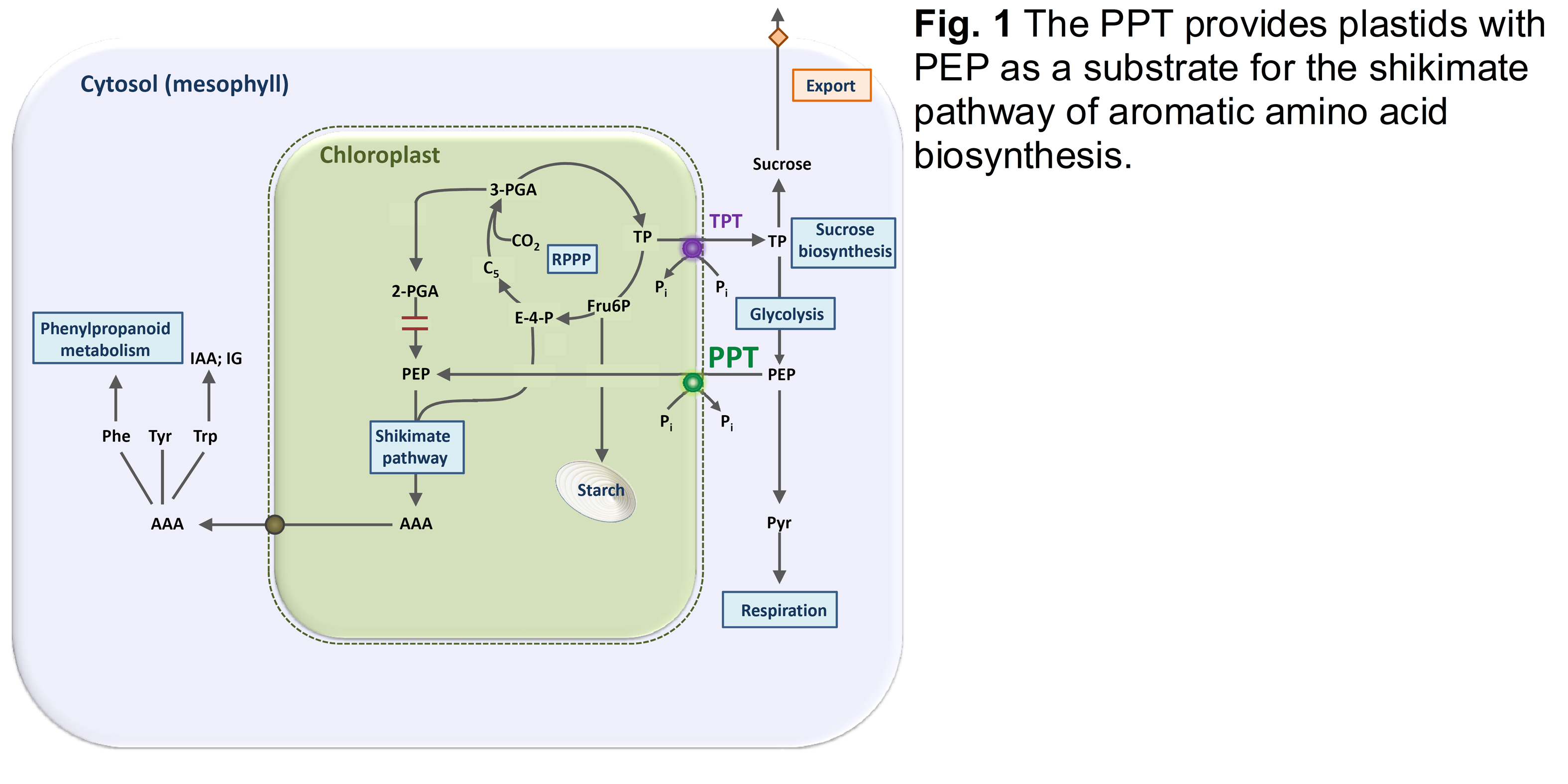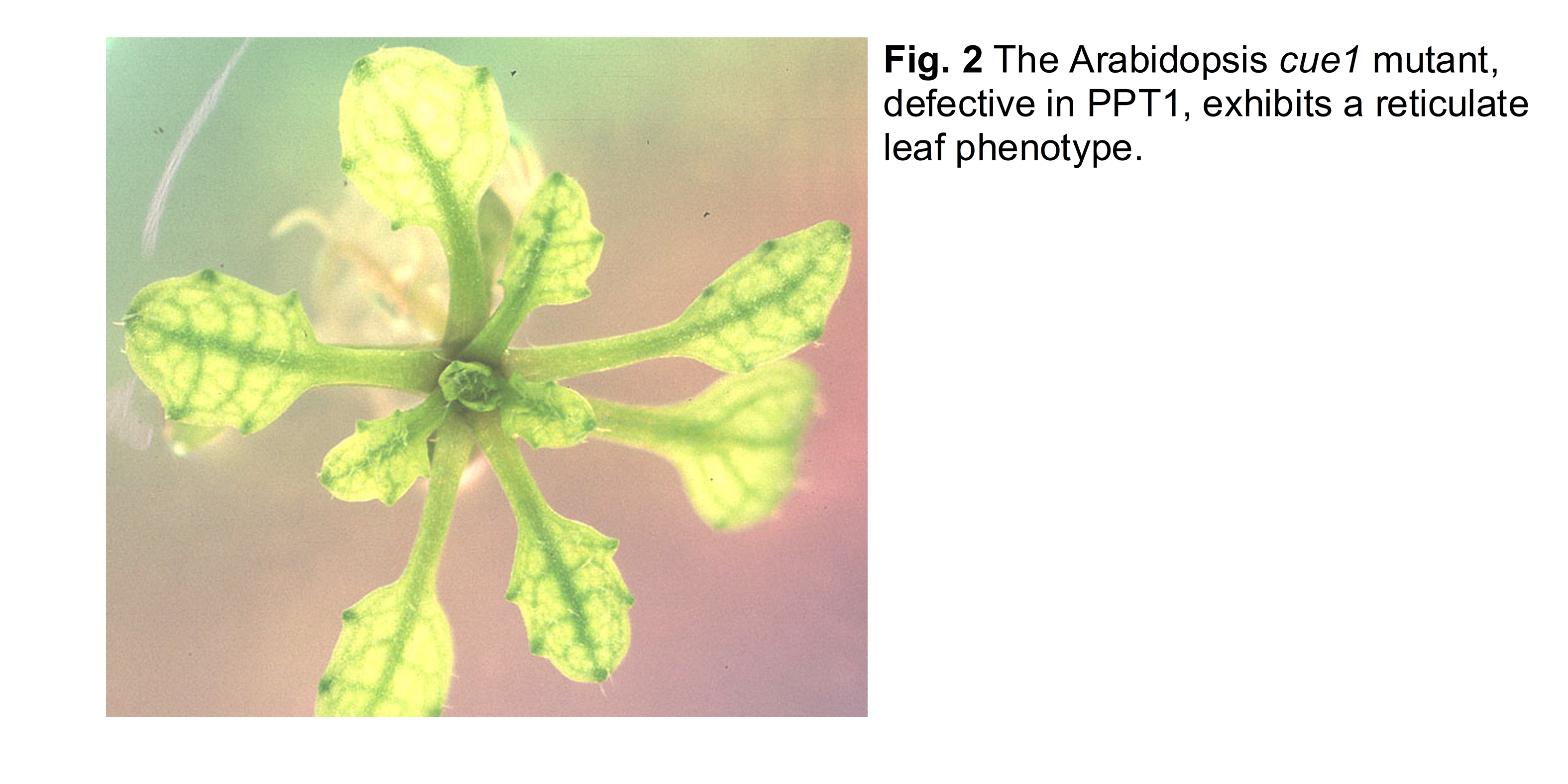Phosphoenolpyruvate/phosphate translocator - Part 1
PEP as precursor for the shikimate pathway
The proposed function of the phosphoenolpyruvate (PEP)/phosphate translocator (PPT) is the provision of PEP to chloroplasts or non-green plastids as a precursor for the shikimate pathway, from which aromatic amino acids and a plethora of secondary compounds derive (Fig. 1).
The genome of A. thaliana contains two PPT genes (PPT1 and PPT2) with distinct temporal and spatial expression profiles. The loss of PPT1 function results in the strong developmental phenotype of the cue1 mutant (Li et al., 1995; cue = chlorophyll a/b binding protein underexpressed), which is characterised by reticulate leaves (Fig. 2) and stunted roots.
Indeed, the cue1 phenotype could be rescued by feeding a cocktail of aromatic amino acids, thus supporting the proposed role of the PPT for the shikimate pathway (Streatfield et al., 1999). However, secondary plant products deriving from the amino acid Phe and the phenylpropanoid pathway were only selectively diminished in cue1, which point at more complex interrelationships and other ways to provide PEP to plastids (Voll et al., 2003). Moreover, the cue1 phenotype could be functionally complemented with the heterologous PPT from cauliflower buds (Voll et al., 2003) as well as with the homologous AtPPT1, but only partially with AtPPT2 (Knappe et al., 2003).
A complete loss of the shikimate pathway would result in the death of the plants (like after treatment with glyphosate). Apart from the PPTs there are other ways to provide PEP to plastids as precursor for the shikimate pathway.
Read more in Part 2 and Part 3
(back to Rainer E. Häusler)

